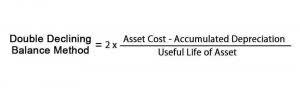
Vertical analysis is a useful tool for financial statement analysis and helps businesses gain insight into their financial position and performance. However, it has certain limitations that should be taken into account when relying on its output. Vertical analysis is a valuable tool for investors who are looking to gain insight into a company’s performance over time. By comparing different items on the income and cash flow statements, you can get an idea of how the company manages its resources and identify potential opportunities or risks.

Key Learning Points
If, for example, the rationale being utilized on the income statement is revenue, then each piece of data will be expressed as a percentage of the revenue being used. Given below is an example, where we have the income statement of a company (in US dollars). We can gather from the data below that the sales of the company increased consistently from year 1 to year 3. However, while sales rose consistently from year 1 to 3, net income dropped markedly in year 3 so we would like to look into this in more detail.
How to perform a vertical analysis on a company’s income statement?
By analyzing these profitability ratios using vertical analysis, you can gauge a company’s financial performance and compare it to industry benchmarks or previous periods. The purpose of vertical analysis is to provide insights into the distribution and significance of various components within a financial statement. Similarly, in a balance sheet, every entry is made not in terms of absolute currency but as a percentage of the total assets. Performing a vertical analysis of a company’s cash flow statement represents every cash outflow or inflow relative to its total cash inflows. The first step of vertical analysis is to make a new income statement, such as the trial balance common size income statement stated below. Here, we have divided each item by the company’s total sales and shown each category as a percentage of total sales for year 1-3 respectively.

Using Vertical Analysis for Benchmarking and Industry Comparisons

Then the common-size percentage formula can be applied to the financial item. The common-size percentage formula is calculated by dividing the analyzed item by the base amount of benchmark and multiplying it by 100. Managers use this to compare a company’s financial performance over time. Overall financial performance is usually analyzed with horizontal or ratio comparison tools. If you are looking to perform this type of analysis on your spreadsheet for either the income statement or cash flow statement.
Risk management

Vertical analysis helps assess a company’s financial performance and efficiency by examining the proportions of key line items. You can identify trends, analyze the Accounting for Marketing Agencies impact of specific expenses or revenue sources, and evaluate profitability ratios using vertical analysis. Vertical analysis is a financial analysis tool that provides insights into the relative size of components within financial statements. It helps stakeholders evaluate how individual line items relate to a base figure, offering a clearer understanding of an organization’s financial health and operational efficiency.
- While horizontal analysis remains valuable for assessing changes over time, vertical analysis offers unique perspectives and granularity in financial analysis.
- This isn’t about hiding information or presenting an unrealistic picture; it’s quite the opposite.
- This approach offers a comprehensive view of a company’s performance and supports informed decision-making.
- This can help you identify trends and spot potential opportunities or risks for a company.
- Let’s continue our analysis of ABC Manufacturing by applying vertical analysis to its balance sheet.
- From the balance sheet’s horizontal analysis you may see that inventory and accounts payable have been growing as a percentage of total assets.
- It’s a key responsibility of the FP&A team to keep track of this and foresee how different strategies might affect the company’s finances in the long run.
How does vertical analysis differ from horizontal analysis?
- The net income or the total gross sales can serve as the foundation for a financial report.
- You can do the same for the other items on the income statement to get a comprehensive view of the company’s income and expenses.
- IT and software costs have increased on a dollar basis, which could initially cause some concern for FP&A executives looking to cut costs.
- You’ll need to choose a point of reference before you can input that number into the equation for vertical analysis.
- For instance, a rising percentage of operating expenses relative to sales may indicate increasing costs that need attention.
So this is a big part of the vertical analysis is that bottom line, right? We can see that for every dollar of sales in 2017, we get to keep 8.3¢ after all of our expenses. Maybe they’re getting a little out of control, so they can do a little more analysis with that information. By leveraging the power of vertical analysis, you can gain valuable insight into the stocks you are analyzing and make more informed decisions.
- Well, another way we can analyze them is through a vertical analysis.
- By doing the same analysis for each item on the balance sheet and income statement, one can see how each item has changed in relation to the other items.
- Financing activities show cash movements related to debt and equity, explaining how the company funds operations and expansion.
- Maybe they’re getting a little out of control, so they can do a little more analysis with that information.
- It helps in making smarter, strategic decisions by offering a clear view of a company’s financial situation.
- There is a baseline period, and numbers from succeeding periods are calculated as a percentage of the base period.
Adaptability, a proactive approach, and a willingness to embrace change are essential. Relying rigidly on a single method of financial analysis can lead to narrow-mindedness and poor decision-making. Instead, using a variety of analysis techniques and financial analysis software as ‘tools in the toolbox’ can provide a comprehensive view of vertical analysis the company, leading to more informed and effective decisions. From a costs perspective, we can see a big increase in total expenses.

Create a free account to unlock this Template
Analysts should consider external factors like economic conditions, industry challenges, and regulatory environments. For example, during an economic downturn, a higher percentage of cash allocated to operating activities might reflect prudent cash management rather than inefficiency. In a booming market, it could suggest missed growth opportunities. Vertical analysis looks at the contributing percentage of each line item to the total base figure.
